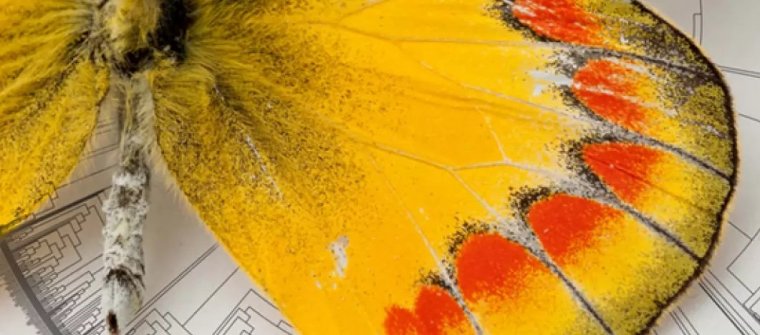| News / Science News |
Butterfly tree of life reveals an origin in North America
About 100 million years ago, a group of trendsetting moths started flying during the day rather than at night, taking advantage of nectar-rich flowers that had co-evolved with bees. That single event led to the evolution of all butterflies.

Scientists have determined where the first butterflies originated and which plants they relied on for food. Photo: Florida Museum photo by Kristen Grace and phylogeny by Hillis, Zwickl, and Gutell
Scientists have known the precise timing of this event since 2019, when a large-scale analysis of DNA discounted an earlier hypothesis that pressure from bats prompted the evolution of butterflies after the extinction of dinosaurs.
Now, scientists have discovered where the first butterflies originated.
Before reaching these conclusions, researchers from dozens of countries created the world's largest butterfly tree of life, assembled with DNA from more than 2,000 species representing all butterfly families and 92% of genera.
Using this framework as a guide, they traced the movements and feeding habits of butterflies through time in a four-dimensional puzzle that led back to North and Central America. According to the results, this is where the first butterflies took flight.
For lead author Akito Kawahara, curator of lepidoptera at the Florida Museum of Natural History, the result was a long time coming.
There are some 19,000 butterfly species, and piecing together the 100 million-year history of the group required information about their modern distributions and host plants. Prior to this study, there was no single place that researchers could go to access that type of data.
"In many cases, the information we needed existed in field guides that hadn’t been digitized and were written in various languages," Kawahara said. Undeterred, the authors decided to make their own publicly available database, painstakingly translating and transferring the contents of books, museum collections and isolated web pages into a single digital repository.
Underlying all these data were 11 rare butterfly fossils, without which the analysis would not have been possible. With paper-thin wings and threadlike, gossamer hairs, butterflies are rarely preserved in the fossil record.
The few that are, can be used as calibration points on genetic trees, allowing researchers to record timing of key evolutionary events.
The results tell a dynamic story — one rife with rapid diversifications, faltering advances and improbable dispersals.
Some groups traveled over impossibly vast distances while others seem to have stayed in one place, remaining stationary while continents, mountains and rivers moved around them. (U.S. National Science Foundation)
YOU MAY ALSO LIKE





